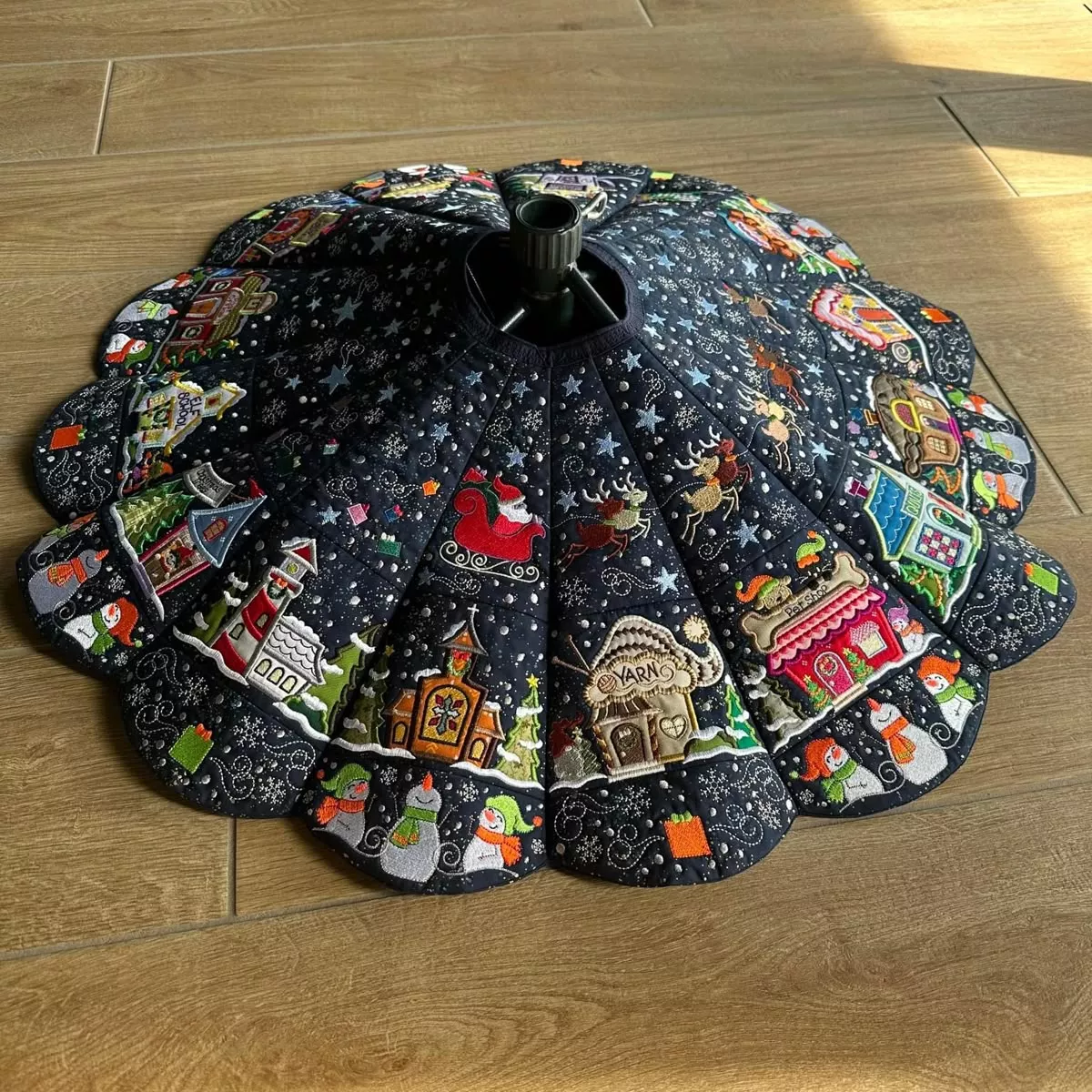
Quilted Christmas Tree Skirt
The “flowers” in the quilt are made of small hexagon units. Each complete flower is typically composed of 7 hexagons (1 center piece and 6 petals).
You will sew the basted hexagons together by hand using a whipstitch. Place two hexagons right sides together and sew along the shared edge, making small, neat stitches.
This is the most time-consuming step—joining the hundreds of individual hexagons and flowers.